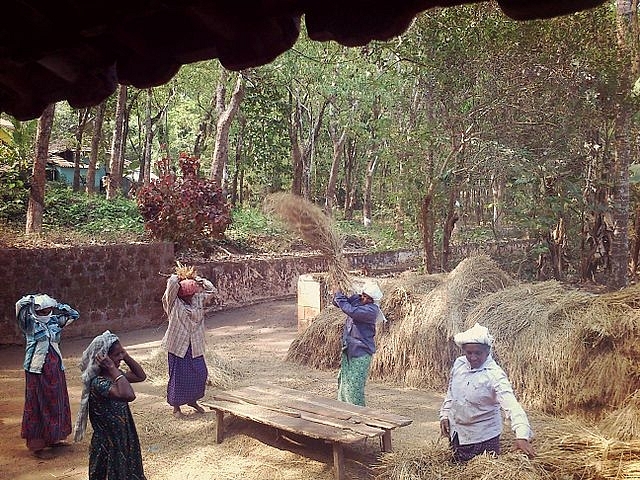Lite
Agricultural Subsidies: A Perfect Test Case For Modi's JAM Strategy

Govt may have kissed goodbye to Rs 18,000 crore in farm subsidy leakages.
The Comptroller and Auditor General(CAG) has, in one of its recent reports, pointed out significant irregularities in the distribution of agricultural subsidies to the tune of Rs 50,000 crore. This has occurred across multiple states, and CAG says payments made to the tune of Rs 18,000 crore to farmers were difficult to ascertain. It was not sure if the full money way paid to farmers. In plain language, this means the money could have been stolen or given to unintended beneficiaries.
Farm subsidies are paid out through government-mandated minimum support prices (MSP). CAG found the leakages linked to millers and state government agencies who disperse the subsidies in one form or another.
An audit report of the CAG says-
A large number of deficiencies like non-authentication of land holdings of farmers, cases of payments to farmers with doubtful identity, non-obtaining MSP certificates, non-availability of details of farmers (bank account number, name of village, etc.) were noticed in the states of Andhra Pradesh, Haryana, Punjab, Telangana and Uttar Pradesh.
It would not be unreasonable to assume that a large portion of such subsidies ‘leak’ to unintended beneficiaries and middlemen. Subsidy leakage is not new to India. Consider the case of kerosene subsidies. Only 46 percent of subsidised kerosene is consumed by households that are below the poverty line. The situation is not different when it comes to fertiliser subsidies that cost nearly Rs 70,000 crore a year. According to informed observers, large quantities of fertilisers are smuggled to neighbouring countries or diverted to other industries. Back in 2008-09, a study pegged leakages at Rs 12,000-15,000 crore.
While the problem is well known, what is to be done about it?
The CAG report, which flagged the irregularities, also points out to the obvious solution: direct benefit transfers (DBT), as done in the case of LPG subsidies. The Jan Dhan-Aadhaar-Mobile (JAM) threesome can be used to identify and target subsidies by cutting out middlemen. JAM may not necessarily solve all the problems causing subsidy leakages but it can help with: (a) eliminating intermediaries (in this case millers of rice who play a role in disbursements), and (b) authentication of intended beneficiaries.
There is, however, one catch. The Supreme Court has said that subsidies cannot be denied to the poor just because they don’t have Aadhaar. This means Aadhaar cannot be made compulsory formally, but can only be pushed through covertly – to those who voluntarily choose to take it.
The best route is to pass a law providing privacy protection to Aadhaar members so that the objections to a wider rollout of the scheme are overcome. Till then, the DBT will limp along.
Introducing ElectionsHQ + 50 Ground Reports Project
The 2024 elections might seem easy to guess, but there are some important questions that shouldn't be missed.
Do freebies still sway voters? Do people prioritise infrastructure when voting? How will Punjab vote?
The answers to these questions provide great insights into where we, as a country, are headed in the years to come.
Swarajya is starting a project with an aim to do 50 solid ground stories and a smart commentary service on WhatsApp, a one-of-a-kind. We'd love your support during this election season.
Click below to contribute.
Latest